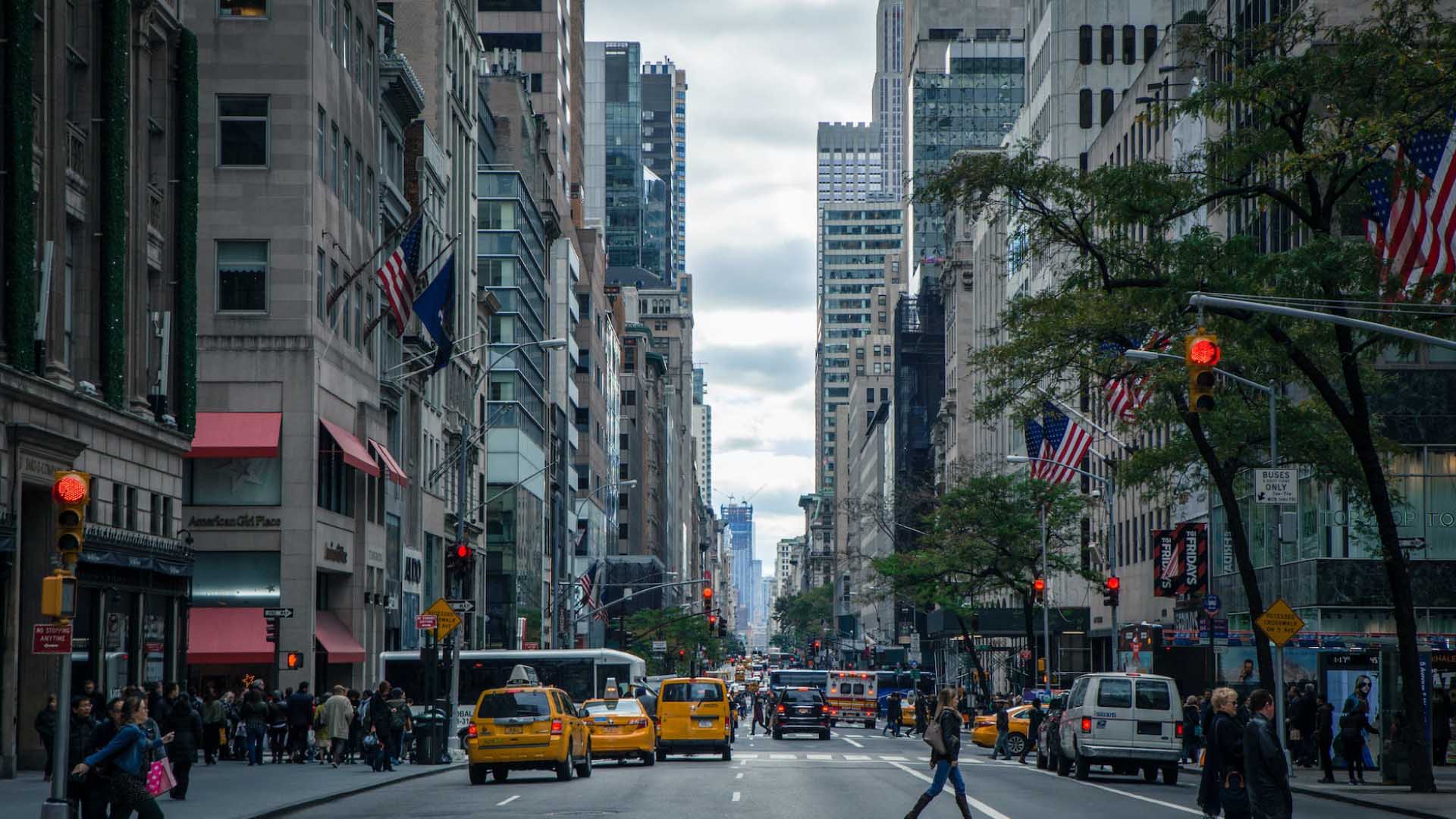Trending: Here are some Business Statistics and Trends to know

|
Getting your Trinity Audio player ready...
|
Do you remember the 2007-2008 financial crisis? It was a time of uncertainty and economic turmoil that affected millions of people around the world. But how did it all start, and what were the consequences?
The 2007-2008 financial crisis was one of the worst economic downturns in modern history. It was triggered by a combination of factors, including the collapse of the US housing market, the subprime mortgage crisis, and the failure of major financial institutions.
In this article, we will take a closer look at the events that led up to the crisis, the impact it had on the global economy, and the measures that were taken to prevent a similar crisis from happening again.
Whether you are an economist, a business owner, or simply someone who wants to understand the history of the financial system, this article will provide valuable insights into one of the most significant events of our time.
Key Events
The 2007–2008 financial crisis developed gradually:
- Home prices began to fall in early 2006.
- In early 2007, subprime lenders began to file for bankruptcy.
- In June 2007, two big hedge funds failed, weighed down by investments in subprime loans.
- In August 2007, losses from subprime loan investments caused a panic that froze the global lending system.
- In September 2008 Lehman Brothers collapsed in the biggest U.S. bankruptcy ever.
After the bubble burst, financial institutions were left with investments in subprime mortgages worth trillions of dollars that had lost most of their value.
What Caused the 2008 Financial Crisis?
The 2008 financial crisis was caused by a combination of factors, including lax lending standards, high levels of debt, low interest rates, and excessive risk-taking.
The housing market in the United States was booming in the early 2000s due to low-interest mortgages and easy access to credit. This encouraged lenders to take on risky investments in subprime mortgages with little regard for their potential consequences.
At the same time, banks were leveraging up their balance sheets with debt that far exceeded their capital base. When the bubble burst and housing prices plunged, banks were left with trillions of dollars of worthless investments.
In addition to these structural problems, poor regulation and government policies further exacerbated the situation by allowing large investment banks to take on too much risk without oversight or accountability.
Ultimately, all of these factors led to one of the greatest economic downturns in recent history.
The 2007-08 Financial Crisis In Review
Sowing the Seeds of the Crisis
This encouraged these banks to take on even greater risks, including investing in securities backed by subprime mortgages. In addition, credit rating agencies such as Moody’s and Standard & Poor’s gave high ratings to these securities, leading investors to believe they were safe investments.
As the housing market continued to boom, lenders relaxed their lending standards even further. Many offered adjustable-rate mortgages (ARMs) with low introductory rates, which would later reset to higher rates, often resulting in unaffordable monthly payments for borrowers. These loans were often issued without verifying the borrower’s income or employment, a practice known as “stated income” or “liar loans.”
In 2006, housing prices began to decline, causing many borrowers to default on their mortgages. This led to a cascade of defaults that ultimately caused the collapse of the subprime mortgage market. As the value of mortgage-backed securities and CDOs plummeted, banks that had invested heavily in these securities suffered huge losses.
The crisis spread beyond the housing market as the interconnectedness of the financial system became apparent. Banks that had invested in subprime mortgage securities suffered losses not only on those securities but also on other assets as the market for these securities dried up. This caused a freeze in the credit markets, as banks became reluctant to lend to each other or to businesses and consumers.
In 2008, Lehman Brothers, one of the five investment banks that had been allowed to leverage their investments at unprecedented levels, filed for bankruptcy. This event triggered a worldwide financial crisis that ultimately led to the Great Recession, which lasted from December 2007 to June 2009.
The financial crisis of 2008 was the result of a combination of factors, including low interest rates, loose lending standards, a housing price bubble, the securitization of subprime mortgages, and the relaxation of net capital requirements for investment banks. These factors combined to create a highly interconnected financial system that was vulnerable to shocks and ultimately led to a global economic downturn.
Signs of Trouble
The signs of trouble in the housing market were becoming increasingly clear by 2004. Homeownership rates had peaked at 69.2%, and the Federal Reserve had started to raise interest rates in an effort to slow down the economy. Over the next two years, interest rates steadily rose until they reached 5.25% in August 2007.
At the same time, home prices started to fall in early 2006, leading to real hardship for many Americans. Homeowners who had purchased at the peak of the market found themselves underwater on their mortgages, owing more than their homes were worth.
Those with adjustable-rate mortgages saw their payments rise even as the value of their homes declined. The most vulnerable subprime borrowers were unable to keep up with their mortgage payments, leading to a surge in defaults.
In 2006, New Century Financial, a major subprime mortgage lender, made nearly $60 billion in loans. However, by 2007, the company had filed for bankruptcy protection. This was just the beginning of a wave of bankruptcies in the subprime lending industry.
By February and March of 2007, more than 25 subprime lenders had gone bankrupt. In April, New Century Financial filed for bankruptcy and laid off half of its workforce. The situation continued to worsen, with Bear Stearns stopping redemptions in two of its hedge funds in June, prompting Merrill Lynch to seize $800 million in assets from the funds.
Despite these warning signs, the worst was yet to come. In the coming months, the crisis would spread beyond the housing market and lead to a global financial meltdown.
August 2007: The Dominoes Start to Fall
By August 2007, it was clear that the subprime crisis was not going away and that the problems were spreading beyond the United States. The interbank market, which keeps money moving around the world, froze completely, largely due to fear of the unknown.
Northern Rock, a British bank, had to approach the Bank of England for emergency funding due to a liquidity problem.
The problems were not confined to Europe. In October 2007, Swiss bank UBS became the first major bank to announce losses of $3.4 billion from subprime-related investments. The crisis was now global in scope, and financial institutions were struggling to assess the value of the trillions of dollars worth of now-toxic mortgage-backed securities that were sitting on their books.
In the coming months, the Federal Reserve and other central banks took coordinated action to provide billions of dollars in loans to the global credit markets, which were grinding to a halt as asset prices fell.
However, the crisis continued to spread, as the value of securities backed by mortgages continued to decline, leading to massive losses for financial institutions and a widespread loss of confidence in the financial system.
March 2008: The Demise of Bear Stearns
The collapse of Bear Stearns was a major turning point in the financial crisis. The firm had been a major player in the mortgage-backed securities market and had significant exposure to subprime loans. As the crisis deepened, investors began to lose confidence in the firm, and it found itself facing a liquidity crisis.
On March 14, 2008, Bear Stearns announced that it had run out of cash and was unable to meet its obligations. The Federal Reserve and JPMorgan Chase stepped in to provide emergency funding to the firm, but it was not enough to save it.
Over the course of a weekend, Bear Stearns was sold to JPMorgan Chase for $2 per share—a fraction of its previous market value. The deal was heavily criticized by many who felt that Bear Stearns had been allowed to fail too easily and that the government should have done more to save it.
The collapse of Bear Stearns sent shockwaves through the financial system and marked the beginning of a new phase in the crisis. In the months that followed, other major financial institutions would falter, and the crisis would deepen even further.
September 2008: The Fall of Lehman Brothers
By the summer of 2008, the financial sector was in a state of chaos. IndyMac Bank became one of the largest banks to fail in the U.S. in July, and in September, the country’s two biggest home lenders, Fannie Mae and Freddie Mac, had been seized by the U.S. government.
However, the biggest and most devastating blow came with the collapse of Lehman Brothers in September. The bank’s bankruptcy marked the largest in U.S. history, and for many, became a symbol of the destruction caused by the global financial crisis.
During the same month, financial markets were in a free fall, with the major U.S. indexes experiencing some of their worst losses on record. The Federal Reserve, the Treasury Department, the White House, and Congress all struggled to devise a comprehensive plan to halt the bleeding and restore confidence in the economy.
The Aftermath
The aftermath of the financial crisis was far-reaching, with businesses and individuals alike feeling its effects. For many, the losses were devastating; some estimates put the total global cost at over $10 trillion.
The U.S. government responded with a massive bailout package designed to stabilize the markets, but even this failed to prevent further damage. Unemployment soared as companies laid off workers and consumer spending plummeted due to reduced confidence in the economy.
Even after the worst had passed, it would take years for some sectors of the economy to recover from the losses sustained during this period of extreme market instability. Nevertheless, lessons have been learned from this crisis and steps have been taken to ensure that similar circumstances do not arise again in the future.


